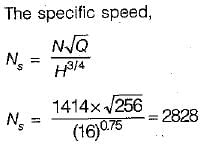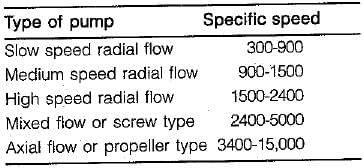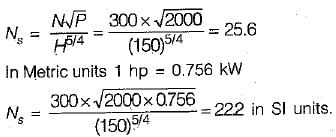Test: Fluid Machines - 1 - Civil Engineering (CE) MCQ
10 Questions MCQ Test - Test: Fluid Machines - 1
A pump running at 1414 rpm delivers 256 lps of water against a head of 16 m. The pump is of the
Consider the following statements:
1. Specific speed uniquely determines the type, shape and design of the turbine.
2. Both unit speed ‘n11’ and unit discharge ‘Q11’ are necessary to uniquely determine the type and design of the turbine.
Which of these statements is/are correct in respect of a hydraulic turbine?
1. Specific speed uniquely determines the type, shape and design of the turbine.
2. Both unit speed ‘n11’ and unit discharge ‘Q11’ are necessary to uniquely determine the type and design of the turbine.
Which of these statements is/are correct in respect of a hydraulic turbine?
If the radius of the centrifugal pump impeller is reduced from 10 cm, the head developed by the pump will change from 10 m to
A Francis turbine working at 400 rpm has a unit speed of 50 rpm and develops 500 kW of power. What is the effective head under which this turbine operates?
For a hydro-electric project with reaction turbine, the draft tube at the exit from the turbine is
In case of semi-circular vanes, thb theoretical maximum efficiency of the wheel can be
Two geometrically similar pumps are running at the same speed of 100 rpm and lifting water against the heads of 25 m and 16 m respectively. First pump is having an impeller diameter of 300 mm. The impeller diameter of second pump shall be
The specific speed of a turbine under a head of 150 m to develop 2000 HP while running at 300 rpm is
A pelton wheel operates at 630 rpm taking 3 m3/s of water under a head of 256 m with a speed ratio of 0.48 (Given  = 4.43) What is the diameter of the impeller?
= 4.43) What is the diameter of the impeller?


























